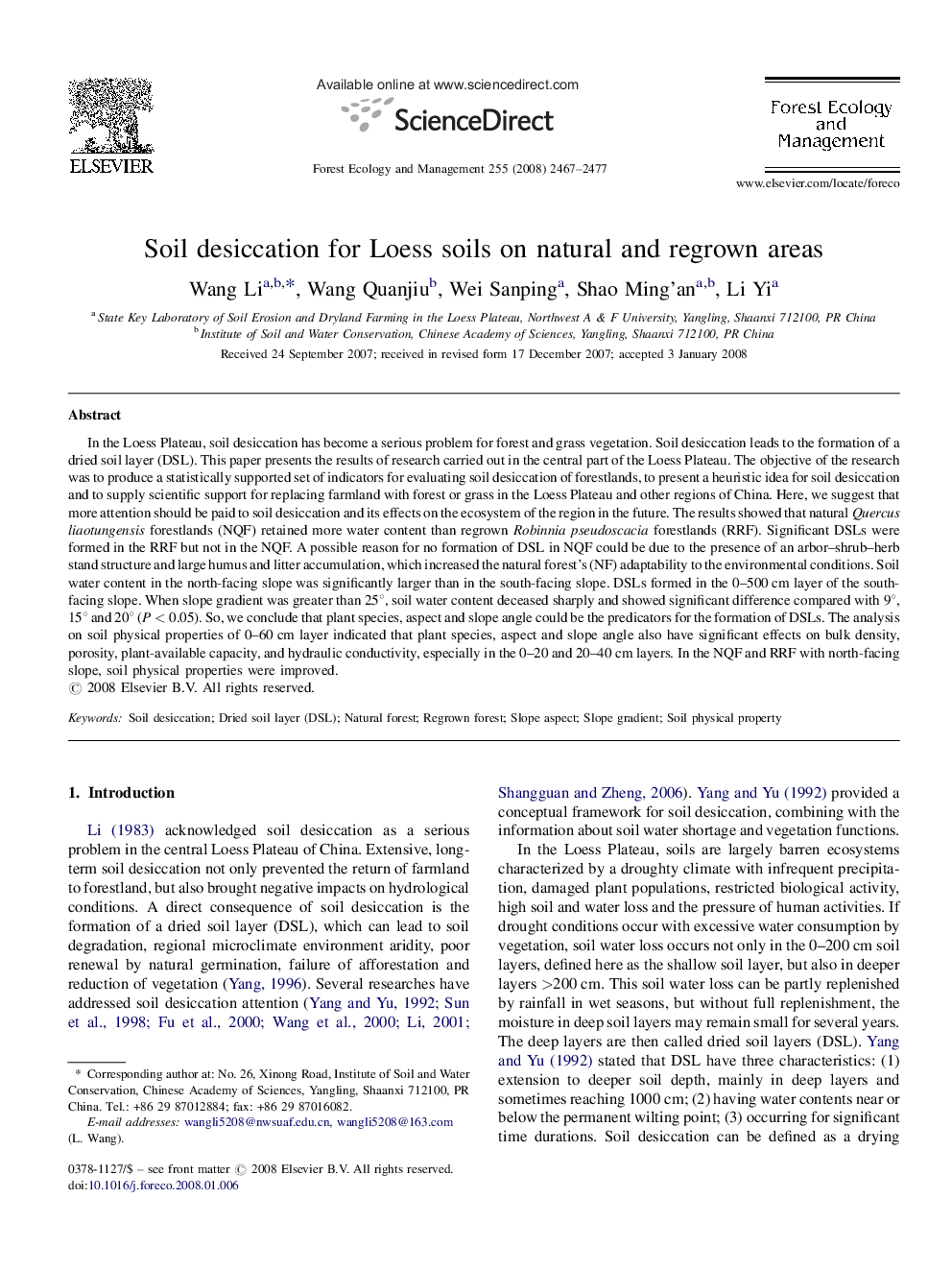| کد مقاله | کد نشریه | سال انتشار | مقاله انگلیسی | نسخه تمام متن |
|---|---|---|---|---|
| 89382 | 159340 | 2008 | 11 صفحه PDF | دانلود رایگان |

In the Loess Plateau, soil desiccation has become a serious problem for forest and grass vegetation. Soil desiccation leads to the formation of a dried soil layer (DSL). This paper presents the results of research carried out in the central part of the Loess Plateau. The objective of the research was to produce a statistically supported set of indicators for evaluating soil desiccation of forestlands, to present a heuristic idea for soil desiccation and to supply scientific support for replacing farmland with forest or grass in the Loess Plateau and other regions of China. Here, we suggest that more attention should be paid to soil desiccation and its effects on the ecosystem of the region in the future. The results showed that natural Quercus liaotungensis forestlands (NQF) retained more water content than regrown Robinnia pseudoscacia forestlands (RRF). Significant DSLs were formed in the RRF but not in the NQF. A possible reason for no formation of DSL in NQF could be due to the presence of an arbor–shrub–herb stand structure and large humus and litter accumulation, which increased the natural forest's (NF) adaptability to the environmental conditions. Soil water content in the north-facing slope was significantly larger than in the south-facing slope. DSLs formed in the 0–500 cm layer of the south-facing slope. When slope gradient was greater than 25°, soil water content deceased sharply and showed significant difference compared with 9°, 15° and 20° (P < 0.05). So, we conclude that plant species, aspect and slope angle could be the predicators for the formation of DSLs. The analysis on soil physical properties of 0–60 cm layer indicated that plant species, aspect and slope angle also have significant effects on bulk density, porosity, plant-available capacity, and hydraulic conductivity, especially in the 0–20 and 20–40 cm layers. In the NQF and RRF with north-facing slope, soil physical properties were improved.
Journal: Forest Ecology and Management - Volume 255, Issue 7, 20 April 2008, Pages 2467–2477